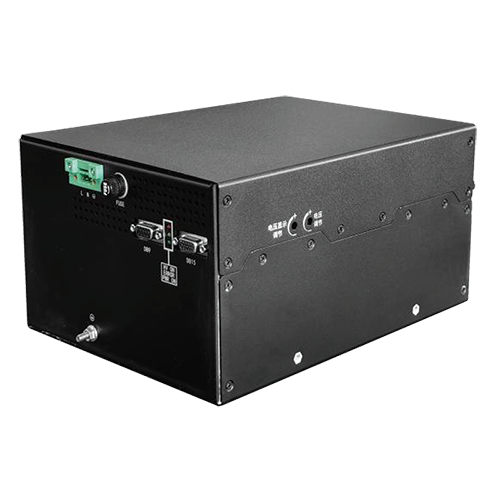Application and Optimization of High-Voltage DC Power Supplies in Battery Testing
1. Core Application Value of High-Voltage DC Power Supplies in Battery Testing
With the rapid development of the new energy industry, battery performance testing, as a critical link to ensure battery quality and safety, places higher demands on the accuracy, stability, and controllability of testing equipment. High-voltage DC power supplies have become core components in battery testing systems due to their wide output voltage range (typically covering 0-1000V or higher), high current regulation accuracy (down to the milliamp level), and fast dynamic response. Their core applications are reflected in the following aspects:
1. Battery Formation and Capacity Testing
In the battery production process, the formation process uses high-voltage DC power supplies to apply specific voltage/current waveforms, fully activating electrode materials and forming a stable SEI film. The power supply must have multi-stage constant current/constant voltage (CC/CV) switching functions. For example, during the formation of lithium-ion batteries, charging starts with a constant current mode up to 4.3V (high-voltage range), then switches to a constant voltage mode until the current drops to 0.05C. During this process, the voltage ripple of the power supply must be controlled within ±1% to avoid damaging the electrode structure. Capacity testing accurately calibrates the actual capacity of batteries by precisely controlling charge/discharge currents (e.g., 1C, 3C rates) and using the long-term stable output of high-voltage power supplies.
2. Safety Performance Testing
Overcharge/overdischarge testing is a critical method to evaluate battery safety thresholds. High-voltage DC power supplies must output voltages 20%-30% higher than the battery's rated voltage (e.g., applying 4.8V to a 3.7V lithium battery) and continuously monitor current changes, quickly cutting off the output when reaching preset safety thresholds (response time <10ms). In withstand voltage testing, the power supply applies a DC high voltage 1.5 times the rated voltage (e.g., 72V to a 48V battery pack) between the positive and negative poles of the battery pack for 1 minute to detect insulation performance, requiring the power supply to measure leakage current with microamp-level accuracy.
3. Dynamic Working Condition Simulation
New energy vehicle batteries need to simulate actual pulse charge/discharge scenarios during driving. High-voltage DC power supplies output complex waveforms such as step waves and square waves through programming functions (e.g., simulating a 50A→150A step current during acceleration conditions). Their voltage regulation rate must be ≤0.1%/V, and the current rise time must be <500μs to realistically reproduce battery performance under dynamic loads.
2. Optimization Directions and Technical Paths for High-Voltage DC Power Supplies
To meet the testing requirements of next-generation high-energy-density batteries (such as solid-state batteries and lithium metal batteries), high-voltage DC power supplies need technological innovations in the following aspects:
1. Wide-Range High-Precision Control Technology
Traditional power supplies often suffer from reduced regulation accuracy during wide-voltage output. Digital PID control algorithms and multi-closed-loop feedback mechanisms (voltage loop, current loop, temperature loop) can be introduced. For example, within the 0-1000V output range, segmented PI parameter adjustment ensures voltage accuracy of ±0.5% in the low-voltage segment (0-200V) and ±1% in the high-voltage segment (800-1000V). Meanwhile, magnetic amplifier technology reduces ripple to ≤50mVrms.
2. Energy Recovery and Efficiency Improvement
For high-power testing scenarios (such as power battery pack testing), traditional power supplies have significant energy loss, and bidirectional current conversion technology can be integrated. When the battery discharges, the power supply inverts electrical energy into alternating current and feeds it back to the grid, with an energy recovery rate of over 95%. Using LLC resonant soft-switching topology increases power supply efficiency from 85% to 94%, reducing the load on the cooling system.
3. Intelligence and System Integration
Develop intelligent communication interfaces based on CANopen/Modbus TCP to achieve parallel expansion of multiple power supplies (e.g., 8×1000V/100A power supplies in parallel to achieve 8000V/100A output). Preset test sequences (such as 50 cycles of charge/discharge) through host computer software and real-time collect voltage, current, and temperature data to generate SOH (state of health) curves. Introduce AI algorithms to analyze historical test data and automatically optimize test parameters (such as dynamically adjusting formation voltage platforms according to battery types).
4. Reliability Design and Safety Protection
Adopt epoxy resin potting technology in high-voltage circuits to improve insulation strength (withstand 1500V DC withstand voltage) and configure dual-redundancy overvoltage protection circuits (hardware threshold + software threshold dual control). Design an intelligent air-cooling system that dynamically adjusts fan speed through temperature sensors, enabling the power supply to operate at full load in a 40℃ environment while controlling noise below 65dB.
3. Future Development Trends
As battery technology evolves toward high voltage (such as 800V vehicle platforms) and high rate, high-voltage DC power supplies will exhibit two major development trends: one is the expansion to higher voltage levels (above 1500V) to meet the testing needs of energy storage battery packs; the other is the integration of virtual simulation technology to predict battery responses under extreme working conditions through modeling and simulation, reducing actual testing losses. Future power supply systems will place greater emphasis on green energy efficiency and intelligent collaboration, becoming core infrastructure to promote battery technology innovation.




















